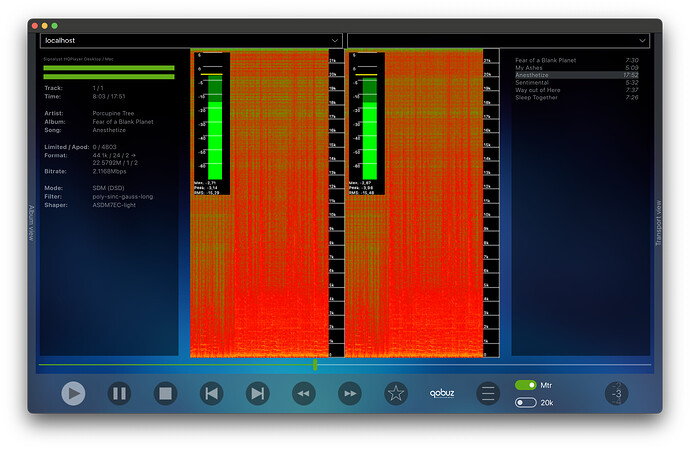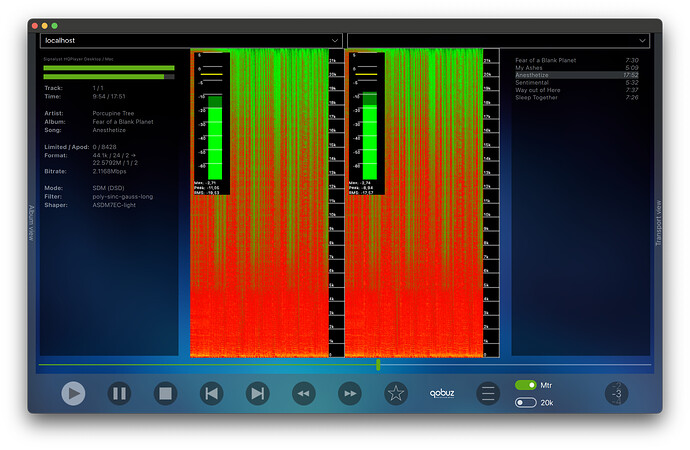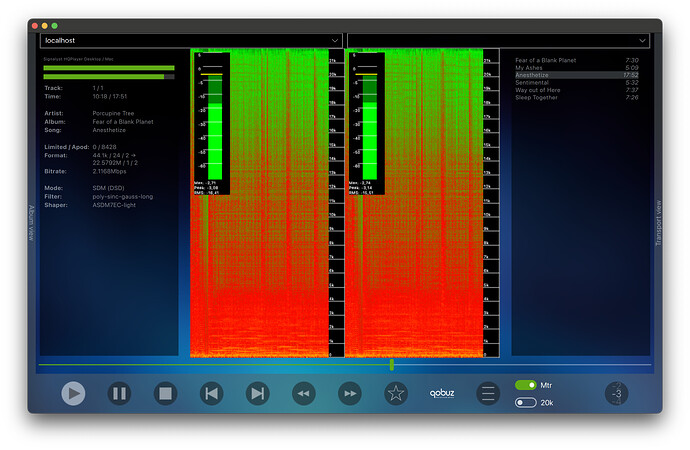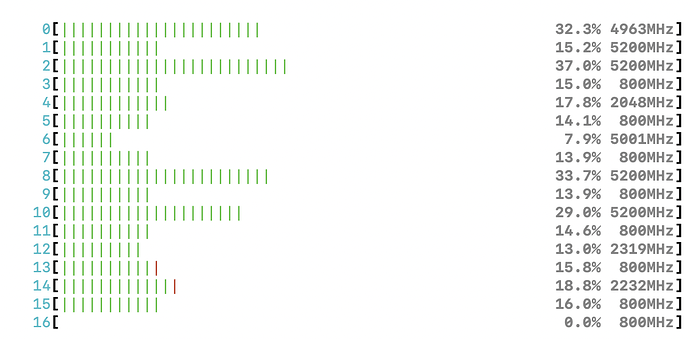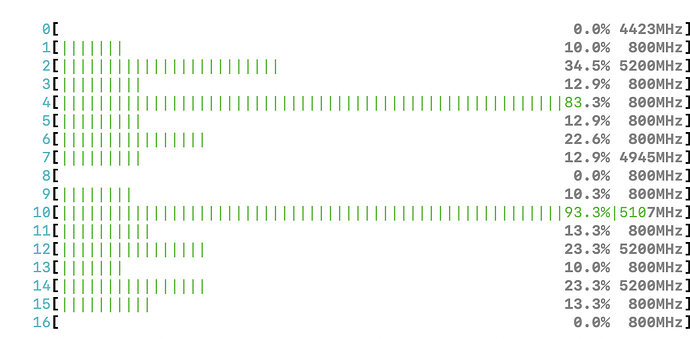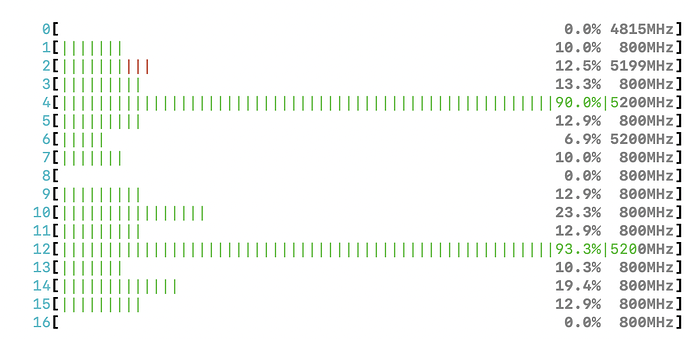Cool, thanks a lot for your effort.
Loved this compilation. Thank you so much for doing this! ![]()
Explain very well what I experience when listening. Hope this will be pinned somewhere, for others to easy find and access.
Now, filters have been very static with me for a long time now, but an addition in hardware, and some future coming very soon, has given me reasons to question my “taste” or perhaps what to listen for.
For a long time my settings stuck on DSD256 out, network to NAA, USB to RME ADI-2 mkII with AKM4493EQ. ASDM7ECv2 and poly-sinc-gauss-xla have given my favourite meny of various rock music the right flavour of smooth highs that have not ripped my ears to confetti. Bass have been under good control and the pallette of details wide open and clear in a large sound stage.
And stupid as **** I had to try some new stuff … Made a fiber conversion close to final mains driven and grounded switch and voilà, here we are again … Next will be a bridge mode in gateway LAN port 4 provided from the ISP to a EdgeRouter 4, also galvanically separated with fibre to not feed in the large local network connecting all homes to same fiber modem and its sum of potential noise. The ER4 have a SFP option as WAN port in the setup, so just need one separate device.
Now the difference between filters have grown larger and is easier to detect compared to before, a sign of transparency I guess.
Anyone else gone the extra mile to refine the network and ended up challanging the previous modulator and/or filter choice? My direction now leaves the super long, linear phase sound and the better perceived transient response is fun and no longer creating the former artifacts when playing hard hitting high compression metal music.
It is to be noted that poly-sinc-gauss-hires is intended for 88.2k and higher sample rates. And poly-sinc-mqa/mp3 to clean up high frequency distortions caused by these encodings. (128kbps MP3 is specified to encode only up to 16 kHz, and higher bitrates still generally distort high frequencies, because encoding those accurately would still too much bit rate from other frequencies, since encoding high frequencies takes the most bit rate)
You would generally want to have a filter that is fair bit down by 21.5 kHz, so that it can reach full attenuation by 22.05 kHz (Nyquist), thus not leaking any images. And not becoming too steep to ring like hell.
By definition, filters like halfband-types, closed-form and sinc-L will have leak some amount of images, because they don’t have full attenuation before or by 22.05 kHz. IOW, filter that preserves original samples will thus always produce some amount of images.
It would be more useful to have a frequency response plot instead of that table, because it rather hard to understand the roll-off curve from couple of values.
Also remember that steeper (longer) the filter, more it will ring on transients in time domain. So if your content has a lot of strong transients like rock or similar, with frequent cymbals and such, you would generally prefer a slower roll-off (shorter) filter that gives you better time domain performance.
So generalized, steeper/longer the filter, better it looks in frequency domain and worse it looks in time domain. And vice versa.
So for hard rock and metal with strong transient, what would be a similar filter in terms of length as gauss short? Gauss short is not apodizing, I wonder if there is a shorter filter that is apodizing suitable for hard rock and metal?
To me it is the opposite. Because long filters smear the time domain, making it shimmery and the highs are not anymore accurate (shimmering/diffuse blur), the clean bright razor sharp snappiness is gone (but I don’t mean harsh or grainy though - that would be a leaky filter)…
Both, too leaky filters, and also the long filter ringing gives me “digitus”, which is listening fatigue after a while. This is usually worst when combined with metal dome tweeters that have 20+ dB resonance peak around 25 kHz or so. In worst case I get tinnitus from that.
Most of the time I go with the defaults:
1x = poly-sinc-gauss-long (flat to 20 kHz and reaches -300 dB by 22.05 kHz)
Nx = poly-sinc-gauss-hires-lp
With either ASDM7EC-light or ASDM7EC-super modulator. Although for some cases I like also ASDM7EC-ul.
At one other forum I made listening test examples of filter ringing, by upsampling pulse transient from 6 kHz sampling rate to 48 kHz. This moves the ringing frequency to 3 kHz Nyquist from the RedBook’s regular 22.05 kHz and makes it 8x longer. So it is kind of “zoomed in” view to easily hear the effect.
The transient itself should sound a toneless “snap”, no particular frequency involved.
A very long linear phase filter sample: https://www.sonarnerd.net/tmp/long.flac
A medium length linear phase filter sample: https://www.sonarnerd.net/tmp/medium-lp.flac
A medium length minimum phase filter sample: https://www.sonarnerd.net/tmp/medium-mp.flac
A short linear phase filter sample: https://www.sonarnerd.net/tmp/short.flac
For RedBook, this ringing would have 22.05 kHz tone. For this example it is just moved down to 3 kHz and it is 8x longer so it is easier to hear.
If there’s another transient within the ringing period, the ringing gets amplified again. So in worst case it is constantly ongoing amplitude modulated tone, with amplitude modulated by the transients.
If one listens to let’s say piano music, it doesn’t really contain transients, as it reaches about 16 kHz highest. So the super long filters work well for such cases, since no ringing is triggered.
Faster the transient, more high frequency components it contains.
I would use poly-sinc-xtr-short-mp for such content. For my ears it best eliminates ringing and makes recordings full of transients most clean sounding.
For a bit slower rock sound, but of course still with cymbals and percussion, like digitized analog recordings form 70’s, you can try poly-sinc-short-mp. These for my ears generally sound very well with poly-sinc-mp too.
If you like poly-sinc-gauss-short and you are just missing the apodizing function, for my ears the middle length poly-sinc-gauss works very well - I don’t experience ringing with this one. With poly-sinc-gauss-long transient smearing is for my ears already noticeable - with content which can show that.
poly-sinc-gauss-short is apodizing!
Thanks Bogi, for the most parts I agree with your choice of filters. I do most of my hard rock stuff with the regular gauss or short mp but I have not tried the xtr short mp or xtr short lp.
this combination is very difficult to beat. short-mp works so well with this… also progressive rock, even a bit more modern is equally great with short-mp.
In any case, there’s of course no black and white one single truth about the choices. Because everybody tends to focus on some different aspect in sound. Or get annoyed by some aspect that someone else doesn’t even notice. That’s why I always want to emphasize that the genre fit mentioned in the manual is just rough guidance based on technical reasoning. And technical reasoning on the other hand is based on typical recording technique and signal properties of each genre.
Two examples I used above are very different in every way. From the recording techniques, to the signal properties. This combined with our personal sensitivities means that I think it is really necessary to have number of different filters. Instead of “one size fits all”.
And modulators have different aspects as well, but that is not particularly bound to music genres for example. Different equally correct modulators can still sound quite different.
Cool! We can look at our music to help us to select the filter too. ![]()
One of the aspects that affects how the filter sounds is shape of the roll-off.
For example poly-sinc-ext2:
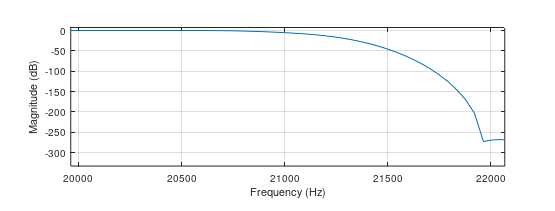
And poly-sinc-gauss-long:
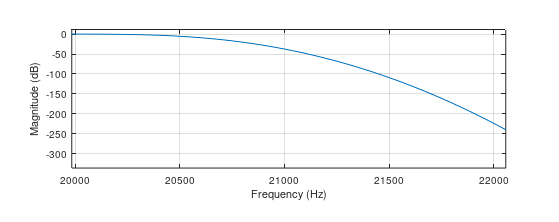
Both are flat to 20 kHz, both reach pretty much same attenuation by 22.05k and both have same length.
Is this available for all the filters, quite interesting, especially with a short explanation? Thanks.
I was real excited a couple years back when I built my HQPlayer Embedded machine but last night, after upgrading to 5.2, I am less excited.
since-MGa no longer playable at DSD256
In fact sinc-LI struggles.
I jumped from 5.0 to 5.2. I know there were some changes to sinc-MGa but can’t find any details. Is it time to dump some cash into my machine or is there something else going on with 5.2?
I’d like to get back to sinc-MGa ASDM7EC-super (or ASDM7EC) at DSD256
My machine is:
model name : 12th Gen Intel(R) Core™ i7-12700K
in htop I do see the frequencies bouncing around but thermals look good. I have not identified why the frequencies are not “locked” but maybe they shouldn’t be when looking at htop. There is also, for MGa, only about 2 cores at a time spike to 100% so processing across cores doesn’t seem balanced. Again, maybe with MGa this isn’t needed?
poly-sinc-gauss-xla works without issue.
Suggestions please… do I throw hardware at it? Or is there more I can do with this machine? Thank you.
Here’s a screenshot of sinc-M (works)
Here’s a screenshot of sinc-LI (stutters)
Here’s a screenshot of since-MGa (stutters)
Difficult to show here the difference between LI and MGa. MGa is more consistently hitting 100% on 2 cores where LI seems to only hit it on one core. Of course, as soon as they hit 100% it stutters, everything crashes, and it ramps up again. Very chaotic.
If those filters are important to your enjoyment, perhaps throw in a GPU.
I am using a i5-13600k with 3080TI 12GB. No issues running the new MGA in DSD512x48, SUPER 7EC 512FS.
I have no issues running sinc-MGa or sinc-L, with asdm7ec-super. This is with a 9700k CPU.
But earlier sinc-MG(a) was erroneously running “mere” 4M taps at 22.6/24.6 MHz rate (DSD512), while it was supposed to be running 32M taps at that rate, assuming 44.1/48k source (16 x 32 = 512). HQ Player - Page 1269 - Software - Audiophile Style
indeed, there’s a change in sinc-MGa and it seemingly became heavier in computations. on my system (14900KS) it now shutters where Sinc-L can play OK. At DSD@1024x48 that is…
Few thoughts questions…
Did you try to overclock? You don’t have to go “off leash”, but may try adding offset (+1 or +2) on the cores and may want to check vcore voltage (notmally undervolting)
In my experience in htop - when you see performance bars are going 90% and above, you are at the performance limit for a single core. But overall frequency also matters. Anyway, htop is only an indicative tool as default refrwsh rate, if I’m not mistaken, is like 1 or 1,5 seconds.
Memory profile XMP?
Actually before overclocking…
Did you check “multicore” value in config?
Did you try different “nblocks” values?
What’s your kernel? Stock / lowlatency / hwe / JL?

